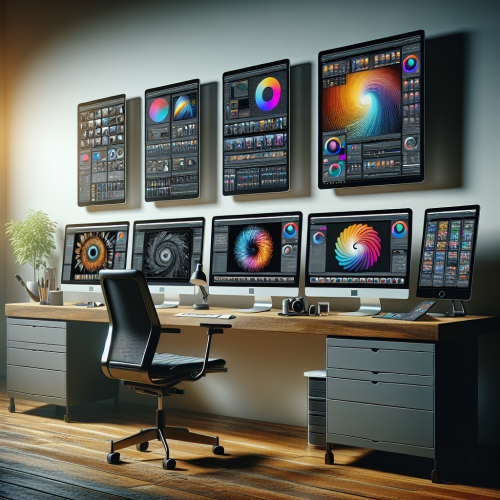Photoshop Versions – As a photographer, choosing the right version of Photoshop can make a huge difference in how efficiently you work, and ultimately, the quality of your images. Over the years, I’ve worked with several versions of Photoshop—some have blown me away, while others left me feeling frustrated. When you’re in the middle of a big project, the last thing you want is software that slows you down or doesn’t deliver the features you need. So, I’ve decided to dive into my experience with some of the most popular versions of Photoshop, helping you figure out which one might be the best fit for your photography needs.

Table of Contents
ToggleExploring the Top 5 Photoshop Versions for Photographers
Photoshop CS6: A Classic Standby
First up is Photoshop CS6. This was my go-to version for years before I made the switch to Creative Cloud. What I loved about CS6 was its reliability and performance. Back in the day, it felt like the ultimate tool for photographers, offering an excellent balance of powerful features without the massive system demands of later versions. The interface was super intuitive, and I appreciated how responsive it was, especially when working with large files.
One of the standout features of CS6 was its Content-Aware Fill. If you’re a photographer who needs to remove distractions from your shots—like a stray person or unwanted object—this tool was a lifesaver. The way it analyzed the surrounding pixels and filled in the gaps was pretty impressive. Sure, it wasn’t as advanced as the later versions, but it did the job without a ton of fuss.
However, the downside was that CS6 is not cloud-based, so you’re missing out on the regular updates and cloud storage options. For me, this was the tipping point when I eventually switched to Creative Cloud. Still, if you don’t mind working with a version that’s a little older and don’t need the absolute latest features, CS6 is a solid choice.
Photoshop CC 2015: The Game Changer
Now, let’s talk about Photoshop CC 2015—this version marked a big shift for me. When I first switched to the Creative Cloud version, I was a bit skeptical about the subscription model. But once I got past that, I couldn’t deny how many more features I had at my fingertips. One of the features I found most useful was Adobe Camera Raw (ACR) integration. As a photographer, working with raw files is essential, and the way Photoshop CC 2015 handled this was so much smoother compared to CS6.
Another huge improvement was the Performance Boost. With the newer versions, Adobe really stepped up its game in terms of optimizing the software to run faster and smoother, even with large image files. No more lagging or constant waiting for things to load! And I can’t forget about the Artboard feature—if you’re working with multiple images or creating composites, it’s a huge time-saver. It gave me the ability to keep everything organized and accessible on one workspace.
But, as with all things, nothing’s perfect. I did have a few frustrations with this version, mostly related to the learning curve for some of the newer tools. Adobe kept adding features that I didn’t necessarily need as a photographer, so it took a bit of time to figure out what was useful for me and what wasn’t.
Photoshop CC 2017: The Introduction of New Tools
Photoshop CC 2017 was the version I upgraded to right after 2015. At first glance, it seemed like not much had changed, but when you dig a little deeper, you notice some cool improvements. The Select and Mask tool, for example, was a huge improvement for making complex selections—especially around hair or fur. I’ve done a lot of portrait work, and this tool made my life so much easier when I needed to isolate subjects from their backgrounds.
What I also loved about CC 2017 was the improved HDR capabilities. If you’re into landscape photography or high-dynamic range (HDR) shots, this version made it much easier to work with multiple exposures and create stunning, well-balanced images. The Camera Raw filter was also enhanced, giving you more flexibility with your edits and allowing you to make non-destructive adjustments after you’ve already applied filters to your image.
I do have to mention that this version had its share of bugs. Adobe tends to roll out updates fast, but sometimes they miss fixing things that could slow down your workflow. Still, overall, I felt like CC 2017 was a solid option for photographers looking to refine their edits and workflow.
Photoshop CC 2020: The One That Changed It All
If you’re looking for the most robust version of Photoshop for photographers, Photoshop CC 2020 is a top contender. This version was a game-changer for me with the new Object Selection Tool and Enhanced Content-Aware Fill. These two features alone saved me hours of work. As someone who does a lot of portrait retouching, being able to select objects with just one click (and doing it accurately) was mind-blowing.
Another standout feature in CC 2020 was the Auto-Blend Layers improvement, which worked wonders for focus stacking in macro and landscape photography. It made combining different focal lengths smoother, without the need for hours of manual masking. Honestly, it felt like I could just focus on the creative side of my work and let Photoshop take care of the technical stuff.
I also loved how Photoshop CC 2020 was constantly improving with every update. Adobe released some amazing features, like the Camera Raw filtering and AI-based tools. These tools allowed me to save so much time in my editing process, and it felt like I could do more without learning complicated steps. Plus, with the continued stability and faster processing, it’s hard to go back to older versions once you’ve worked with this one.
Photoshop CC 2021: The Current Standard
Finally, we have Photoshop CC 2021, which is the version I’m currently using. This version, although a continuation of previous updates, brought some exciting new tools to the table, like Sky Replacement and Neural Filters. The Sky Replacement tool is, quite frankly, a lifesaver for outdoor photographers. I can easily swap out a dull sky for a vibrant one, without the tedious masking process. For those of us shooting landscapes or cityscapes, this is a game-changer.
Neural Filters is another innovation that uses artificial intelligence to enhance photos with just a few clicks. Whether you’re smoothing skin, enhancing eyes, or making slight adjustments to the facial structure, this tool is incredibly intuitive and saves so much time.
In terms of performance, Photoshop CC 2021 feels lightning-fast, even when working with large files or applying heavy edits. It integrates well with other Adobe apps like Lightroom and Adobe Portfolio, creating a seamless workflow for photographers.
Final Thoughts
Choosing the right version of Photoshop for your photography depends on a variety of factors: the features you need, your system’s performance, and how comfortable you are with learning new tools. For me, Photoshop CC 2020 and Photoshop CC 2021 have been the most reliable and feature-packed versions. However, Photoshop CS6 and CC 2015 are also solid options if you don’t want to commit to a subscription model or need something that’s less resource-intensive.
Ultimately, Adobe’s continuous improvements to Photoshop mean that whatever version you choose, you’ll have a powerful tool at your fingertips. The key is to find the right version that suits your workflow and allows you to do what you do best: create stunning images.







